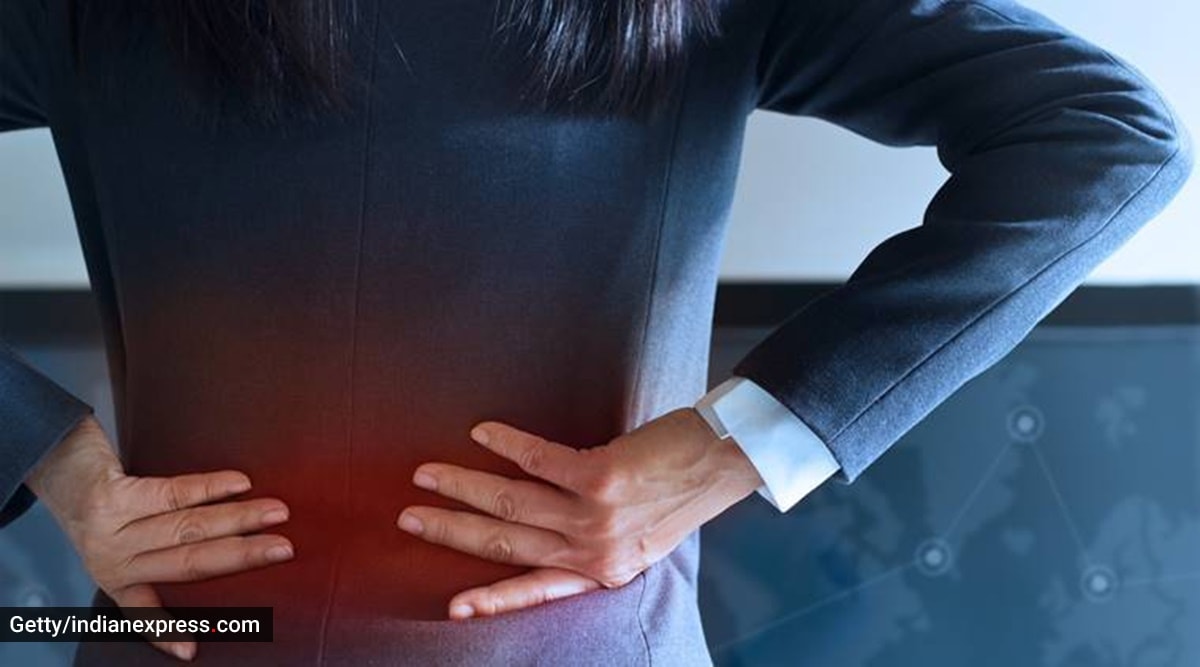 Women over 40 should also pay a close attention to the kind of back pain they are having. (Source: Getty Images/Thinkstock)
Women over 40 should also pay a close attention to the kind of back pain they are having. (Source: Getty Images/Thinkstock)“Ankylosing Spondylitis (AS) — a disease often confused with mechanical back pain — can show signs in young adults as early as in their 20s or 30s. Contrary to the popular belief, AS is not a man’s disease and impacts both the genders equally. Yet, women continue to overlook the symptoms, which leads to an extremely delayed diagnosis. Early signs could be pain and stiffness in the lower back, especially in the morning or after prolonged inactivity. Female AS patients tend to ignore these symptoms which over time results in fusing of the spine leading to structural damage progression,” says Dr Rohini Handa, senior consultant rheumatologist, Apollo Hospitals, New Delhi.
Prevalent amongst 1 in 500 adults, AS is an irreversible, inflammatory, and autoimmune condition that leads to spinal fusion. The absolute cause of AS is still unknown; however, experts believe that most people with AS have a common gene called HLA-B27. AS results in chronic pain, stiffness, and swelling in various parts of the body (back, buttocks and thighs etc.) especially, in the morning or after sitting for a long time.
Some of the key symptoms include:
- Starts before the age of 40 years
- Progression of the disease can manifest over the years
- AS improves with exercise and worse with rest
- Sudden shooting pain in the back, joints, hips, buttocks, and back of the thigh
Further highlighting more on this condition amongst women, Dr Handa explained, “Of all the patients who visit me with various rheumatological conditions, about 100 patients are diagnosed with ankylosing spondylitis (AS) in a month. The increasing numbers reflect increased awareness. However, when it comes to women, we don’t seem to be doing that well. The average male to female ratio of patients in my practice is 4:1. The actual figures are 2-3:1. This signifies that ankylosing spondylitis, in women, is underappreciated and underdiagnosed. Back pain in women is mostly attributed to periods or pain after childbirth. There is a societal acceptance that being a woman you have to put up with back pain. At times, even physicians do not take back pain in women seriously. These reasons contribute to the greater diagnostic delays in women, with disease progression that goes unrecognised.”
The male to female ratio of AS patients is 3:1 or 2:1 globally, though this varies in different ethnic groups. Female AS patients are likely to experience more fatigue, functional disability than men and may also develop psoriasis over time. They might also experience psoriatic arthritis, inflammation in their peripheral and cervical joints, in contrast to men who usually tend to have lower back pain, especially during initial years.
“Women with AS should take their back pain seriously and seek appropriate medical attention so that diseases like AS are diagnosed early and treated appropriately. Contrary to popular perception, AS does not exempt women. Women should pay attention to back symptoms and consult a rheumatologist. For patients on treatment, please do not let the ongoing Covid pandemic interrupt your treatment. Continue with your ongoing treatment under medical supervision. Biologics represent a major advance in the fight against AS. Talk to your rheumatologist about this game-changing treatment,” he added.
Women with AS often receive overlapping diagnosis of other spine-related conditions like spinal osteoarthritis, slipped disc (sciatica) and most commonly fibromyalgia, a chronic pain disorder. A study found that 21 percent of women eventually diagnosed with AS were first told they had fibromyalgia.
Treatment options and protocols are similar for AS patients of both genders, with (NSAIDs) and physiotherapy being the first line of treatment. The most advanced treatment has been with the development of biologics. This is a class of drugs that target specific parts of the immune system. Biologics have been shown to help slow the progression of AS when all other treatments have failed.
“These medications don’t interfere with women’s periods or menopause and their long-term safety is well established in research studies. However, pregnancy and breastfeeding can impose restrictions on the use of some drugs used in the treatment of AS. Along with the medications, rheumatologists highly recommend daily exercise and having a balanced diet to improve general health and prevent comorbidities associated with AS. Women with AS have risks of developing asthma, depression and osteoporosis. The timely diagnosis could help female AS patients adopt these habits early and improve their overall quality of life. Rheumatologists encourage women suffering from severe back pain to recognise the symptom and not to dismiss it as poor lifestyle-related pain,” he added.
📣 The Indian Express is now on Telegram. Click here to join our channel (@indianexpress) and stay updated with the latest headlines
For all the latest Lifestyle News, download Indian Express App.